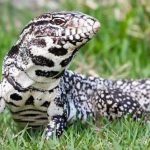 Technology
Technology  Technology
Technology  Humans
Humans 10 Everyday Human Behaviors That Are Actually Survival Instincts
 Animals
Animals 10 Animals That Humiliated and Harmed Historical Leaders
 History
History 10 Most Influential Protests in Modern History
 Creepy
Creepy 10 More Representations of Death from Myth, Legend, and Folktale
 Technology
Technology 10 Scientific Breakthroughs of 2025 That’ll Change Everything
 Our World
Our World 10 Ways Icelandic Culture Makes Other Countries Look Boring
 Misconceptions
Misconceptions 10 Common Misconceptions About the Victorian Era
 Mysteries
Mysteries 10 Strange Unexplained Mysteries of 2025
 Miscellaneous
Miscellaneous 10 of History’s Most Bell-Ringing Finishing Moves
 Technology
Technology Top 10 Everyday Tech Buzzwords That Hide a Darker Past
 Humans
Humans 10 Everyday Human Behaviors That Are Actually Survival Instincts
 Animals
Animals 10 Animals That Humiliated and Harmed Historical Leaders
Who's Behind Listverse?

Jamie Frater
Head Editor
Jamie founded Listverse due to an insatiable desire to share fascinating, obscure, and bizarre facts. He has been a guest speaker on numerous national radio and television stations and is a five time published author.
More About Us History
History 10 Most Influential Protests in Modern History
 Creepy
Creepy 10 More Representations of Death from Myth, Legend, and Folktale
 Technology
Technology 10 Scientific Breakthroughs of 2025 That’ll Change Everything
 Our World
Our World 10 Ways Icelandic Culture Makes Other Countries Look Boring
 Misconceptions
Misconceptions 10 Common Misconceptions About the Victorian Era
 Mysteries
Mysteries 10 Strange Unexplained Mysteries of 2025
 Miscellaneous
Miscellaneous 10 of History’s Most Bell-Ringing Finishing Moves
Ten Animals That Produce and Store Toxins in Unlikely Places
When you think of the most lethal animals on the planet, which ones come to mind? Perhaps you think of animals such as the king cobra, inland taipan, box jellyfish, or black widow spider. With so many venomous and poisonous species of animals on Earth, it’s no wonder these deadly creatures both fascinate and frighten us.
However, hidden deep within the depths of the natural world lies a realm of creatures whose toxic arsenals are tucked away in unlikely hiding spots. From a rodent that possesses poisonous fur to a newt that has toxic barbed ribs to a primate that produces deadly venom in its armpits, these animals have evolved ingenious methods that not only serve as a safeguard against predators but also allow them to assert dominance within their own ecosystems.
Here are ten fascinating animals that produce and store toxins in unlikely places.
Related: 10 Horrifying Toxins That Are Actually Helping People
10 African Crested Rat
The African crested rat, or maned rat, is a unique, nocturnal rodent that is only found in certain parts of Ethiopia, Sudan, Somalia, Uganda, Kenya, and Tanzania. The rodent has a body measuring 10 to 14 inches (25 to 36 cm) long, with a 6 to 8-inch (14 to 21 cm) tail, and can weigh up to 6 pounds (2.7 kg). However, the African crested rat looks nothing like a typical city rat.
The African crested rat is certainly not the most fearsome-looking creature. In fact, the rabbit-sized rodent resembles a gray puffball crossed with a skunk. However, despite its cute, furry appearance, the African crested rat’s fur is packed with a poison so lethal it can kill an elephant or hippo. So, how exactly has this poisonous rat acquired such deadly fur?
The rodent chews on the bark and leaves of the highly toxic tree species Acokanthera schimperi, locally known as the poison arrow tree. The bark of this tree contains a highly potent cardenolide toxin called ouabain. This particular poison was used by people in East Africa as a coating on their arrowheads when hunting elephants or other large mammals.
After the rat chews on the toxic bark, it spreads its now toxic saliva on specialized hollow and porous hairs on the sides of its body. The shafts of the hairs are perforated with tiny holes and essentially behave like wicks, rapidly drawing up any liquid that comes into contact with them. The hairs are also able to retain the poison even after the fur dries without losing any toxicity.
When the African crested rat is threatened, these hairs will then stand up, revealing black and white stripes underneath, which serve as a warning to any potential predators. However, should a predator choose to proceed and bite the rodent, the African crested rat ensures that the flank is the first thing a predator encounters, resulting in a mouthful of potentially deadly poison.[1]
9 Spanish Ribbed Newt
Spanish ribbed newts, also known as Iberian ribbed newts or sharp-ribbed newts, are found in scrub, cultivated land, and woodland areas of Portugal, Spain, and northern Morocco. This highly aquatic species can reach up to 12 inches (30 cm) in length, making them the largest newt species found in Europe. However, what makes this newt species truly impressive is the fact that it possesses a distinctive defense mechanism—the ability to push out its ribs until they pierce through its body.0
When the Spanish ribbed newt becomes agitated or perceives a threat, it will swing its ribs forward, which increases the angle of the newt’s spine by up to 50 degrees, all while keeping the rest of its body still. Once the tips of the newt’s ribs are outside its body, the deadly defense doesn’t stop there, and the newt adds one more toxic layer to its arsenal.
The Spanish ribbed newt will then secrete a poisonous, milky substance onto the surface of its body. The toxin, in combination with the newt’s protruding ribs, acts like poisonous barbs. Should a predator try to bite the newt or pick the newt up with its mouth, the now-poisonous ribs will cause severe pain or possibly death to the attacker, allowing the newt to go free.
Despite this bizarre and seemingly painful method of defense, the newt is able to repeat this action every time it is attacked, all without being harmed or suffering any ill effects in the process.[2]
8 Spiny Dogfish
Spiny dogfish, which are also known as piked dogfish, rock salmon, and spiky dog sharks, are small, bottom-dwelling sharks that live along the northern Pacific and Atlantic coasts. The spiny dogfish has a slender body, pointed snout, and skin that is gray to brown on top but becomes increasingly paler (or even white) on the belly. It also has small, white spots running down each side of its body that fade with age.
The spiny dogfish is a small shark, measuring 3 to 4 feet (0.9 to 1.2 meters) in length. However, despite its small size, spiny dogfish are aggressive and have a reputation for relentlessly pursuing their prey. In fact, the name “dogfish” stems from their habit of feeding in packs—numbering in the hundreds or thousands—as they feast on small fish, clams, jellyfish, krill, octopus, and squid.
Like all sharks, spiny dogfish have skin that is covered in tooth-like scales called denticles, which make the skin rough and abrasive. However, unlike most sharks, spiny dogfish are also venomous. They have two spines—one in front of each dorsal fin—that secrete a mild venom.
The spiny dogfish will use these spines to defend itself, curling in a bow and striking at any threatening predator or passing fish. While spiny dogfish are considered one of the most abundant living shark species in the ocean, they are harmless to humans.[3]
7 Male Platypus
The platypus is truly a remarkable, one-of-a-kind mammal. With the bill and webbed feet of a duck, the paddle-shaped tail of a beaver, and a sleek furry body like an otter, not only is the platypus well-adapted for its semi-aquatic lifestyle in Australia, but it is also one of the most unusual creatures in the animal kingdom. While the platypus is typically associated with the fact that this species (along with only two species of echidna) are the only egg-laying mammals, male platypuses are also one of the world’s few venomous mammals.
Male platypuses possess a hollow, horny spur on each inner hind ankle—measuring 0.4 to 0.7 inches to 18 mm) in length—which is connected to a venom gland in the upper leg. The glands produce a clear, sticky venom that peaks during their mating season toward the end of winter. Therefore, as males begin to fight over females, the male platypus will wrap its legs around an opponent, viciously stab with the sharp spurs, and inject its competition with the venom. Aside from eliminating any potential mating competition, the male platypuses can also use this tactic to deliver a strong toxic blow to any other attackers.
Although platypus venom is not life-threatening to humans or other platypuses, it can cause severe swelling and excruciating pain. Unfortunately, for humans who have been spurred by a male platypus, the pain cannot be relieved even with the use of morphine.[4]
6 Spur Winged Goose
The spur-winged goose is a massive, long-necked waterfowl that is mostly black, with varying amounts of white on its head, belly, and wings. The spur-winged goose also has iridescent bronze-green upperparts, a gray-blue bare face, and a warty red bill. Weighing anywhere from 14 to 22 pounds (6.3 to 9.9 kg) and measuring 30 to 45 inches (75 to 115 cm), this goose is the largest waterfowl found in Africa, and it is among the largest species of geese in the world.
Despite its large size, the spur-winged goose is incredibly agile. Not only can it cover long distances during migration, but the spur-winged goose can travel up to 88 miles per hour (142 kph), making it the fastest-flying waterfowl.
However, what makes this powerful, broad-winged bird truly incredible is the fact that it has odd, sharp spurs on the bend of its wings, which can also sometimes be poisonous. Typically, it uses the spurs to attack other spur-winged geese or waterfowl that encroach upon its territory, inflicting deadly injuries. However, the spur-winged geese from Gambia have an additional chemical weapon in their arsenal—the cantharidin toxin.
Spur-winged geese are known to eat blister beetles, an insect that secretes the cantharidin toxin as a defense against predators. Therefore, as the spur-winged geese ingest the blister beetles, the poison stays in the birds’ tissues. Although they do not appear to use their toxic flesh to discourage predators, if a human were to eat a cooked spur-winged goose, they would get very sick or possibly die, given that just ten milligrams of the cantharidin toxin is enough to kill a human.[5]
5 Slow Loris
Slow lorises are a small group of wide-eyed nocturnal primates found exclusively in the forests of south and southeast Asia. These primates have compact bodies, short snouts, dense fur, and distinctive dark, teardrop-shaped marks around their eyes, with stripes down their backs. Slow lorises measure 10 to 15 inches (20 to 37 cm) long, but despite their small size and adorable appearance, they pack a gnarly venom-laced bite that is powerful enough to rot flesh. They are also the only group of venomous primates.
Slow lorises are omnivores, eating small birds, insects, reptiles, fruit, gum, and nectar. However, inside their mouths, the bottom teeth form a structure called a toothcomb, which the slow lorises use for grooming as well as gouging holes in tree trunks in order to extract the gum. This toothcomb also plays a crucial role in their grisly bite, which is strong enough to pierce through bone.
The slow loris has a raised, bald patch on its inner upper arm—the brachial gland—which secretes a pungent, noxious oil. When the slow loris feels threatened, it will raise its arms and lick the gland. Together, the saliva and oil produce a venomous solution that is drawn to the toothcomb tip by capillary action. This solution is potent enough to kill small mammals and arthropods and cause anaphylactic shock, heart irregularities, and death in humans who have been bitten by the slow loris.
Thankfully, the slow loris tends to save its toxic bite for members of its own species. Given that slow lorises are viciously territorial, they often use their venom to defend their mates, offspring, and food from other slow lorises.
Female slow lorises will also “park” their babies in a tree and go off to forage, but before they do, the mothers will lick the brachial gland and groom their young so that the venom is transferred to their babies’ fur. This acts as a deterrent to any potential predators, such as clouded leopards and sunbears.[6]
4 Cane Toad
The cane toad, also known as the giant or marine toad, is a large, warty, poisonous amphibian native to South and Central America. Adult cane toads are usually brown or gray-brown but can also be olive or reddish-brown in color. Their body is usually covered with warts that are tipped with small spines that also discharge a toxin. However, cane toads are poisonous not only as adults but also in all stages of their lives—as eggs, tadpoles, and toadlets.
The cane toad’s most distinctive feature is its parotid glands, a large swelling on each shoulder behind the “ears,” which secrete a milky poison called bufotoxin. When the toad is threatened, it turns sideways so that the parotid glands are directed toward the attacker. While bufotoxin usually oozes out of the toad’s glands, it can also be squirted in a spray over short distances. Additionally, the toxin can be released any time pressure is applied to the glands, such as when the cane toad is handled or taken into the mouth by an animal.
From there, the milky-white toxin is absorbed through the victim’s eyes, mouth, and nose. In humans, the cane toad’s toxin causes intense pain, temporary blindness, and inflammation. However, the toxin is strong enough to kill lizards, snakes, crocodiles, and pets—almost anything that dares to bite, lick, or attack it.[7]
3 Whitespotted Boxfish
Whitespotted boxfish are found throughout the Pacific and Indian Oceans and make their homes in the reef ecosystems. Just as their name suggests, these fish have angular, oblong bodies due to the fact that their bodies are indeed an actual box made of thickened and fused plate scales. This internal armor serves as a form of protection for their organs, leaving only their fins, tails, eyes, and mouth protruding from the structure.
Whitespotted boxfish exhibit distinct differences in appearance between the sexes. For example, females are blackish in color with white spots, whereas males have the same coloration on their backs but have sides that are blue with bright yellow bands and spots. However, both sexes are less than 10 inches (25 cm) in length. Despite their odd appearance and small size, the whitespotted boxfish is equipped with a potent weapon to keep predators at bay.
When the whitespotted boxfish is threatened, it secretes a poisonous, slimy mucus through its skin. The mucus will then disperse through the surrounding water in order to ward off or even kill potential predators. This unique defense tactic means that aside from much larger fish and sharks, the whitespotted boxfish has few natural predators.[8]
2 Horned Lizard
Horned lizards, also known as “horny toads,” can be found in arid regions of Central America and North America. With their horns and spiky scales, these reptiles resemble little dragons, although each of the 17 species varies in coloring and the exact number and placement of horns. However, the horned lizard’s bizarre defense mechanism is far more unique than its appearance.
Horned lizards have a wide variety of predators, such as bobcats, wolves, coyotes, foxes, snakes, and hawks. Therefore, depending on the predator, the horned lizard will employ several defense strategies in order to prevent being eaten.
First and foremost, the horned lizard will rely on its camouflage to keep it hidden. The horned lizard, especially babies, will also often try to simply flee from predators. However, if a horned lizard is indeed caught, it will puff up with air, driving its spikes into the mouth or throat of a predator. From there, it will lean its head back and move it from side to side, digging its horns even further into the soft tissues of the predator’s mouth or throat. If none of these tactics work to set the horned lizard free, it will then shoot blood out of its eye sockets.
So, how exactly does the horned lizard manage to expel blood from its eyes? Horned lizards are able to contract the muscles around their eyes, cutting off blood flow back to the heart. Instead, blood will flow into the eye area, filling the sinus area and pressurizing until it eventually ruptures, forcefully expelling the blood in a stream that can travel over 3 feet (0.9 meters) away.
However, the blood that the horned lizard squirts from its eyes is imbued with chemicals due to the venomous harvester ants that it eats. When the substance enters the eyes or mouth of a predator, it causes a burning sensation, which can be a powerful deterrent. The foul, bitter taste is also repulsive, giving the horned lizard a chance to escape.[9]
1 Puss Caterpillar
There are 11 species of asp caterpillars, most of which resemble a fluffy cotton ball. Asp caterpillars, which are the larval form of flannel moths, are native to North America and are often found grazing on the leaves of oak or elm trees. However, the most notorious for stinging people is Megalopyge opercularis, the larval form of the southern flannel moth known as the puss caterpillar. In fact, the puss caterpillar is one of the most venomous caterpillars in the United States.
These caterpillars are teardrop-shaped with coloring that varies from yellow or gray to reddish-brown and even a mixture of colors. Mature larvae measure 1 to 1.5 inches (2.5 to 3.8 cm) long. However, lurking beneath its hairy surface, the puss caterpillar has an arsenal of venomous spines, which can inject a powerful toxin into any potential predators or any unsuspecting human who happens to touch them.
While the level of pain caused by the caterpillar’s sting varies from person to person, the pain has been likened to blunt force trauma or being burned by the tip of a lit cigarette. Although it will not kill a human, the pain lasts for several days or even weeks, often requiring a trip to the hospital.[10]








